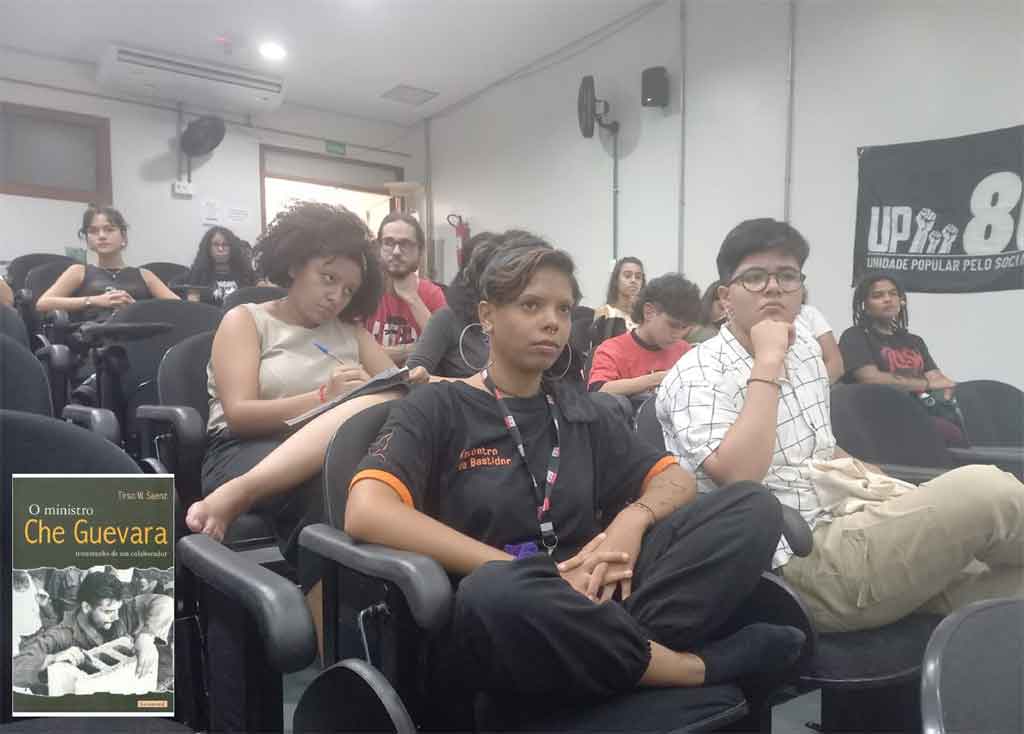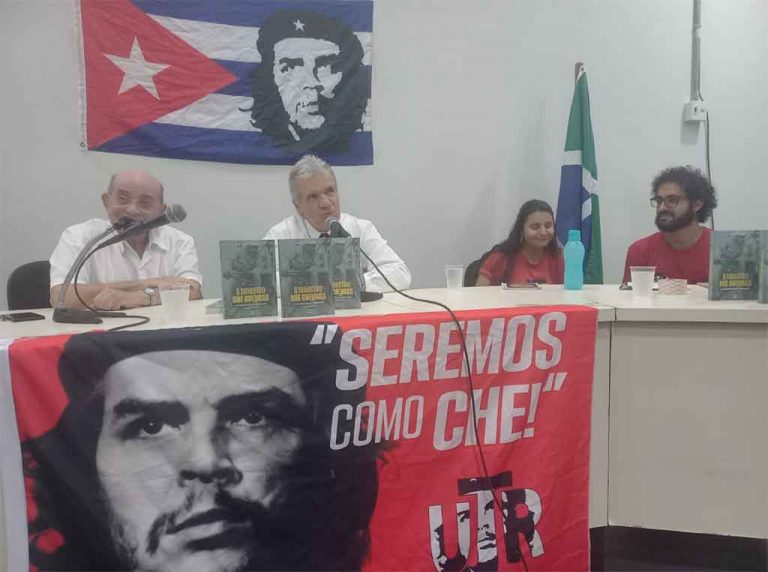Saenz, who was deputy minister of Industries of Cuba between 1961 and 1965, rescues in this volume, in an unpublished form, the legacy and daily work of Ernesto Guevara de la Serna, universally known as Che Guevara or simply Che, as head of that portfolio.
In a panel to discuss, reflect and evoke Che, the writer who also served as first vice-president of the Academy of Sciences of the island was accompanied by students of that higher education center and the Cuban ambassador to Brazil, Adolfo Curbelo, who welcomed the debate that took place.
Taking advantage of the conversation about the values that guided the life of the man known as the Heroic Guerrilla, the diplomat condemned the genocide perpetrated by Israel in the Gaza Strip and reiterated his country’s support to the Palestinian people.
He referred to Cuba’s recent victory at the United Nations headquarters in New York, where the world supported the resolution presented by Foreign Minister Bruno Rodríguez to denounce the unilateral blockade by the United States that has lasted more than six decades.
Curbelo also referred to the visit made last September to Havana by Brazilian President Luis Inacio Lula da Silva to participate in the G-77 + China Summit.

He emphasized that the visit was ‘proof of the bonds that unite the Cuban and Brazilian peoples’.
At the end of the debate, Saenz, guest researcher of the UNB and author and co-author of 34 books, insisted that it is the duty of revolutionaries to keep alive the thought of the Argentine-Cuban guerrilla fighter.
On different occasions, he recounted that one of his characteristics was to be a personal example for all his comrades and subordinates.
He was the first to arrive at the Ministry and the last to leave.
This was shown in different aspects: in his work and management style, in his modesty, in his austerity, his demands, in the fulfillment of his duties’, he commented.
Saenz underlined that this man hardened to fight for his ideals in a guerrilla war never lost his tenderness with his family and wife, because, for him, ‘a revolutionary was guided by a feeling of love’.
After a campaign of several months, Che was taken prisoner by Bolivian troops in Quebrada del Yuro and the day after his capture he was assassinated (October 9, 1967).
His mortal remains were located in 1997 and sent to Cuba, where they rest in the Comandante Ernesto Che Guevara Memorial Complex built for this purpose in the central city of Santa Clara.
mgt/ocs










